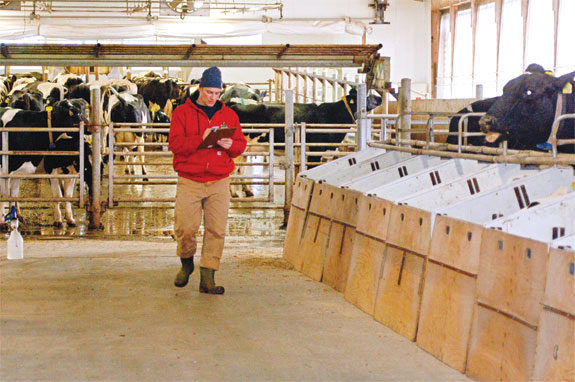One of our favorite research activities is conducting cow watch. Something about the solitude of being with the cows, free of all other responsibilities, focused on documenting their movements, every five minutes for a four-hour shift… time and cares seem to fade away. Our cow watch protocol is to document cows’ body position (lying, standing or perching) and jaw movement (eating, ruminating, drinking or nothing) every five minutes over three consecutive days. We used to use 10-minute intervals, but for statistical purposes, five minutes is more precise and more statistically powerful.
Not much time to enter the data or let your mind wander before having to make the next observation. Cows are watched at all times; both in and out of stalls, while milking, etc. We have a crew of “watchers” that have their preferred four-hour shift. People definitely differ as either morning larks or night owls.
My first experience with documenting chewing behavior was back when I was a grad student under Jim Welch at UVM. Dr. Welch is well known for his work studying rumination and how NDF content of a feed or diet is highly correlated to chewing behavior. He had a system based on pneumatic pressure to record jaw movement.
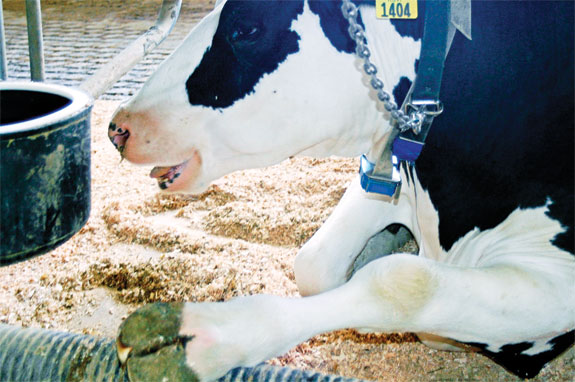
A standard halter was fitted with surgical tubing around the muzzle-strap, which was connected via more tubing to a chart recorder. Each jaw movement pressed on the soft tubing causing a “puff” of air to surge through the line, causing the chart arm and pen to move on the scrolling roll of paper. In this way we had a “seismograph”-like line recording of the jaw movement.
Today there are much more technical means of recording jaw motion, including video camera capture and vocal tags that record the sound resulting from jaw motion – though what often works most easily and very precisely is simple visual observation. This may be more labor-intensive, requiring round-the-clock personnel, but in the end it is very reliable and less intensive than hours of watching video footage and certainly less expensive than digital systems.
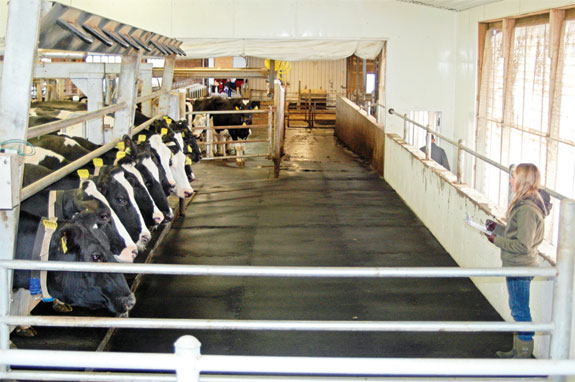
Of late, much of our cow watch research is related to chewing behavior relative to different diets and feed types. We are looking to improve our understanding of how forage type and quality affect chewing behavior, which corresponds to rumen health, animal health and productivity. To date, we have conducted a number of cow watches looking at chewing response to forage type relative to peNDF, NDF digestibility and forage fragility.
In each trial we have documented statistically significant differences in chewing time relative to forage quality. In our latest study, we fed lactating cows a standard high- production diet, 43 percent CS on DM basis, and fed all of the CS as either conventional or BMR. A one-for-one change in CS only, no other ration changes or adjustments for increased DMI of the BMR diet.
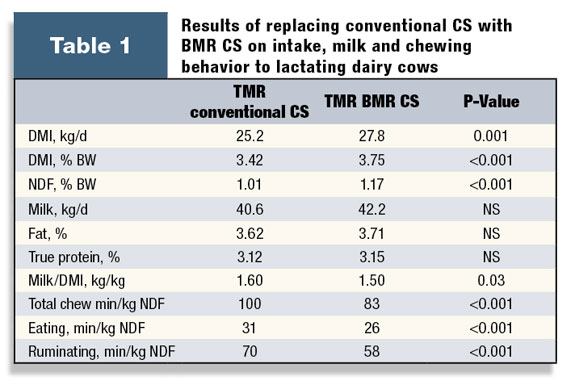
The NDF and peNDF content of the two diets were nearly identical (34 percent), peNDF (18 percent, yes, very low). The NDFd24h of the conventional and BMR CS were 42 percent and 57 percent respectively. Fragility was similar for the two silages at 15min of ball milling. We found significant differences in DMI and NDF intake, but no difference in milk or milk components, see Table 1 (at left) .
We did see reduced chewing activity and rumen pH with the BMR diet. And, hold on now, reduced feed efficiency with the BMR diet. Now before anyone starts popping champagne … let’s remember that we simply replaced the CS and made no other ration adjustments that we normally would have under commercial dairying practices.
But it does appear that under this study design, BMR allows for greater intake and likely increases rate of passage through the rumen and digestive tract to a greater extent. We did measure total tract digestibility but have not finished all of the assays.
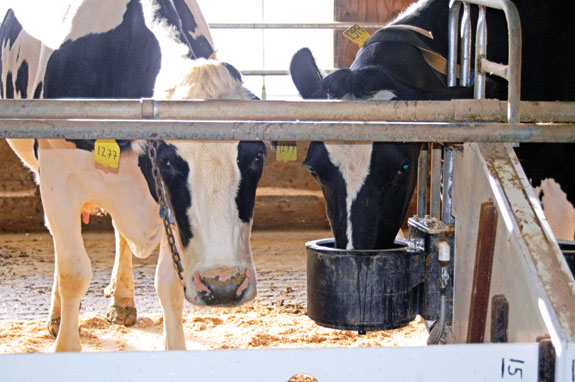
Some may think it crazy or boring watching cows chew. My civilian, “non-dairy” friends certainly do, but once they try it, they realize how intriguing cow behavior can be, if just for some of the odd things they do. PD
References omitted due to space but are available upon request to editor@progressivedairy.com .
— Excerpts from William H. Miner Farm Report, November 2010
PHOTOS : Our cow watch protocol is to document cows’ body position (lying, standing or perching) and jaw movement (eating, ruminating, drinking or nothing) every five minutes over three consecutive days. Photos courtesy of Kurt Cotanch.

-
Kurt Cotanch
- Forage Lab Director
- William H. Miner Agricultural Research Institute
- Email Kurt Cotanch
